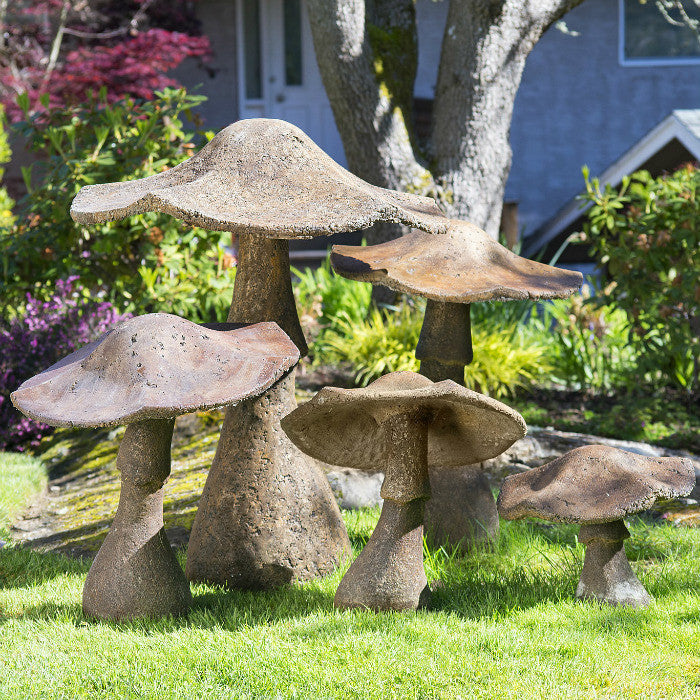Decorative mushrooms can transform a mundane garden into a whimsical wonderland. As an avid gardener, I’ve discovered that these charming fungi not only add color and character but also encourage creativity in garden design. In this comprehensive guide, we will explore the various types, benefits, and placement tips for decorative mushrooms, ensuring your garden becomes a captivating retreat.
What are Decorative Mushrooms?
Decorative mushrooms are ornamental items made to resemble real mushrooms, designed specifically for garden use. They come in various materials, colors, and sizes, serving both aesthetic and functional purposes.
Types of Decorative Mushrooms
Understanding the different types of decorative mushrooms can help you select the best fit for your garden. Below are the popular categories:
1. **Ceramic Mushrooms**
Made from clay and painted with vibrant glazes, ceramic mushrooms are durable and weather-resistant. They often feature intricate designs that add charm to any landscape.
2. **Wooden Mushrooms**
Crafted from reclaimed wood or other sustainable materials, wooden mushrooms offer a rustic ambiance, blending seamlessly into natural settings.

3. **Metal Mushrooms**
Metal mushrooms can bring a modern twist to your garden. They are designed in various styles, from minimalist to elaborate, and can withstand harsh weather conditions.
4. **Plastic Mushrooms**
Budget-friendly and lightweight, plastic mushrooms come in numerous colors and styles. Though they may lack the tactile quality of other materials, they can be a fun addition to informal garden spaces.

Benefits of Incorporating Decorative Mushrooms in Your Garden
1. **Aesthetic Appeal**
Decorative mushrooms add a unique, whimsical touch that can enhance the overall look of your space. They serve as focal points or complementary accents to your garden design.
2. **Encouraging Creativity**
The variety in colors, shapes, and materials can inspire creative arrangements and layouts, allowing gardeners to express their personality through their outdoor spaces.

3. **Wildlife Friendly**
Some decorative mushrooms attract beneficial insects and pollinators, contributing to a healthier ecosystem within your garden.
4. **Easy Maintenance**
Most decorative mushrooms are low-maintenance, requiring minimal care compared to live plants. This makes them an ideal choice for busy gardeners.

Placement Tips for Decorative Mushrooms
1. **Create Focal Points**
Use larger decorative mushrooms as focal points in your garden beds to draw the eye. Arrange them among flowers or shrubs for a striking contrast.
2. **Layering for Depth**
Layer smaller mushrooms in front of taller plants. This adds depth and intrigue to your garden, making it visually appealing from every angle.

3. **Pathway Accents**
Line garden pathways with smaller decorative mushrooms to guide visitors and create a magical stroll through your space.
4. **Indoor and Outdoor Versatility**
Don’t forget that decorative mushrooms aren’t just for outdoor gardens. They can also brighten up indoor spaces, such as living rooms or sunrooms, adding a touch of nature indoors.

Popular Decorative Mushroom Styles: A Comparison Table
| Type | Material | Durability | Price Range | Best For |
|---|---|---|---|---|
| Ceramic Mushrooms | Clay | High | $$ | Formal gardens, color splash |
| Wooden Mushrooms | Wood | Medium | $$ | Rustic, natural settings |
| Metal Mushrooms | Metal | High | $$$ | Modern gardens, unique designs |
| Plastic Mushrooms | Plastic | Low | $ | Informal gardens, kids’ spaces |
Personal Experience: My Journey with Decorative Mushrooms
When I first discovered decorative mushrooms, I was captivated by their whimsical presence. In my own garden, I experimented with a mix of ceramic and wooden styles, which created a quirky yet charming atmosphere. After placing a bright red ceramic mushroom at the entrance, I noticed not only a transformation in my garden’s aesthetics but also an increase in compliments from visitors!

Each season, I like to rearrange my mushrooms, exploring new placements that complement blooming flowers or seasonal decor. It’s fascinating how a simple decorative element can inspire such joy and creativity in garden spaces.
Pros and Cons of Decorative Mushrooms
Pros
- Add visual interest to garden spaces.
- Encourage friendly wildlife.
- Offer an easy-care landscaping option.
- Available in various styles, colors, and sizes.
Cons
- Some materials may fade over time.
- Plastic options can lack durability.
- May not fit every garden design aesthetic.
Frequently Asked Questions (FAQs)
1. **Where can I buy decorative mushrooms?**
Decorative mushrooms can be found at garden centers, home improvement stores, and online retailers. Websites like Amazon, Etsy, and specialized garden decor sites offer a vast selection.
2. **Can decorative mushrooms withstand winter weather?**
The durability of decorative mushrooms varies by material. Metal and ceramic options typically withstand winter, while plastic may not last in extreme cold. Always check the manufacturer’s recommendations.
3. **Do decorative mushrooms attract pests?**
Generally, decorative mushrooms are safe and do not attract pests. However, if placed in damp areas, ensure they remain clean and dry to prevent any unwanted guests!
4. **How do I clean decorative mushrooms?**
To clean your decorative mushrooms, use a soft cloth and mild soap with water. Avoid harsh chemicals, as they can damage the paint or finish.
5. **Can I paint or customize my decorative mushrooms?**
Absolutely! Many gardeners enjoy personalizing their decorative mushrooms with non-toxic paints or embellishments, allowing for a unique touch to their garden.
Conclusion
Incorporating decorative mushrooms into your garden landscape opens up a world of creativity and charm. They serve not only as beautiful accents but also as conversation starters, encouraging you to enjoy and enhance your garden to the fullest. Whether you choose ceramic, wooden, metal, or plastic mushrooms, they can add a delightful touch that reflects your personality and style.
As you embark on your journey of adding these enchanting elements to your garden, remember to have fun and let your imagination run wild. Happy gardening!